brad465
Established Member
I'm of the belief that the thing that would destroy Trump more than anything isn't a bullet, or a major political scandal, it's a gust of wind and a water balloon to the face.Maybe he should take his toupee off first
I'm of the belief that the thing that would destroy Trump more than anything isn't a bullet, or a major political scandal, it's a gust of wind and a water balloon to the face.Maybe he should take his toupee off first
What will China do next? I don't see them backing down, but will they escalate again?
Don't even think it's subtle. I am waiting for mainstream media to pick up on how many of his mates have made billions.
Plastic doesn't tend to retain moisture, plus I don't get how Trump can take a shower without all the orange coming off, but then again Ronseal does exactly what it says on the tin!Maybe he should take his toupee off first
Plastic doesn't tend to retain moisture, plus I don't get how Trump can take a shower without all the orange coming off, but then again Ronseal does exactly what it says on the tin!
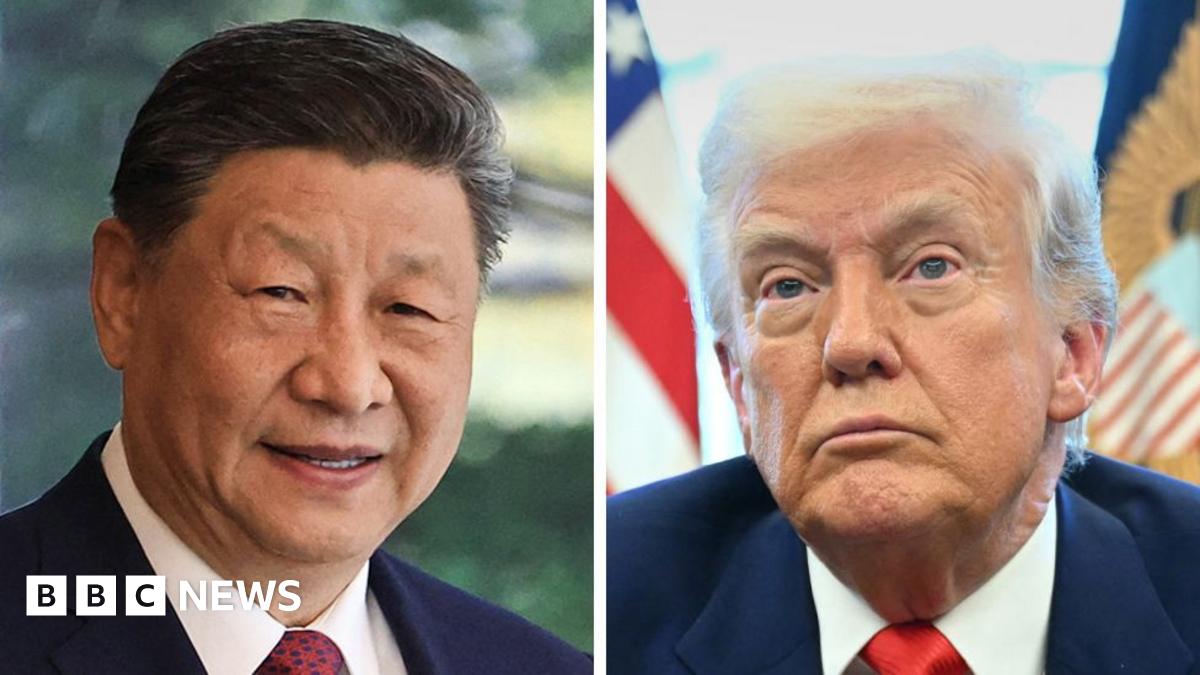
China raises tariffs on US goods to 125%
China has announced a new 125% tariff on US imports.
This is up from 84% announced on Wednesday. It's the same as the current US tariff on Chinese goods.
It's in keeping of the pattern emerging in this trade war, where China has been matching the tariff increases set by the US.
China says it 'will not respond' to additional US tariffs
As we've just reported, China has announced a new 125% tariff on US imports, which comes into effect tomorrow.
Beijing says it will not respond to any further tariffs imposed by the US.
It says the "abnormally high tariffs" imposed by the US "seriously violates international and economic trade rules, basic economic laws and common sense and is completely unilateral bullying and coercion".
China continuing the tit for tat, now tariffs on 125% on US imports, though they've also said they won't respond to additional tariffs from here:
MAGA - Make America Go Away!
MAGA - Make America Go Away!
As much as I'd like to agree, too many of the worlds large companies and financial markets revolve around America, if America suffers, so does the rest of the West.
The land of the free...I could never, ever, visit the USA as things stand. If they saw 1% of what I've said on places like here, I'd be arrested in a heartbeat. Freedom of speech my arse.
The land of the free...
I could never, ever, visit the USA as things stand. If they saw 1% of what I've said on places like here, I'd be arrested in a heartbeat. Freedom of speech my arse.
The land of the free...

A lot of people share this view. The second lead on the front page of the Financial Times this morning is headlined European travellers avoid America as political turmoil takes toll on tourism.I could never, ever, visit the USA as things stand.
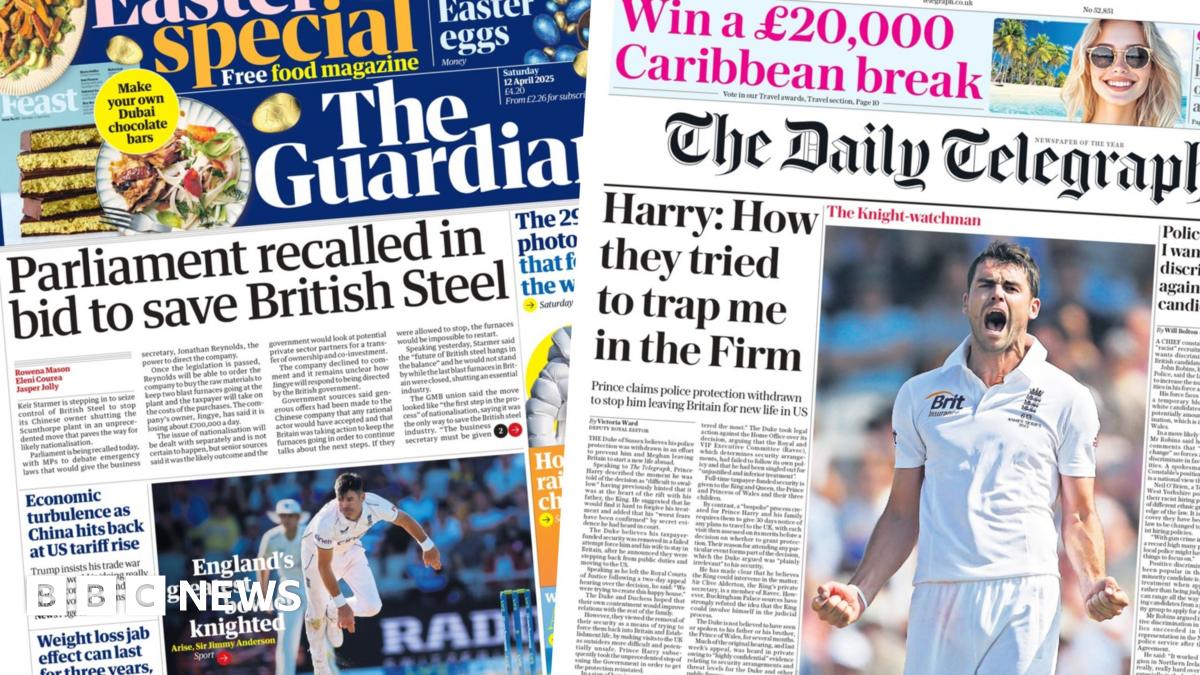
The Financial Times focuses squarely on Donald Trump's tariffs, with its Saturday edition leading on the Federal Reserve's "absolute" readiness to intervene to stabilise the markets, according to an official from the US's central bank. It also reports that tourism to the US from Europe has "fallen sharply" since Trump's return to office.
We have been witnessing history in the last week and a half, and we are nowhere near the end of it yet. Things we thought of as normal for all of our lives are gone forever.There could be no going back, even if the Democrats get back into power and insist everything will be back to normal. I am not sure it ever can be.
The White House
July 12, 2024
Tariffs as a Major Revenue Source: Implications for Distribution and Growth
In the early days of our nation, tariffs, or taxes on imported goods, were a primary source of government revenue. Over time, however, as the nation’s economy and businesses matured, it became clear that it was both fairer for American households and better for businesses, many of whom increasingly imported inputs to aid their domestic production, to raise revenues through a progressive income tax rather than regressive tariffs. Tariffs remain an important and targeted tool, of course, to protect against unfair trade practices. But, as we show in this issue brief, to use them as a revenue source that would significantly or even wholly replace the income tax would increase inflation and invite deep economic distortions that benefit the wealthy and harm low- and middle-income Americans.
Tariffs have not provided a meaningful share of revenue for the US government since the early 1900s (see Figure 1a). Existing imports duties on goods raised $80 billion last year, about 2 percent of the $4.44 trillion in total Federal tax revenue (Figure 1b).[1] By comparison, the individual income tax was responsible for 49 percent of total Federal tax revenue, and an additional 36 percent was raised via social insurance (payroll) taxes, which are closely tied to individual income. In other words: more than three-quarters of federal tax revenue is linked to individual wage and non-wage income.
It is mathematically unlikely that a broad tariff could ever replace the revenue raised by the individual income tax. For example, given the value of goods imports during FY2023 ($3.12 trillion), an across-the-board 70 percent tariff would be required to replace the equivalent revenue raised by the individual income tax under the overly simplistic assumption that consumers, producers, and our trading partners would have made no changes to their behavior in response to the tariffs. There are several reasons to believe, however, that this “static” exercise is a substantial revenue overestimate.
First and foremost, an across-the-board tariff is likely to spark retaliatory tariffs that reduce U.S. exports and subsequently induce transfers of collected duties to impacted U.S. businesses. For example, U.S. farmers facing retaliatory export tariffs during the 2018-2019 trade war received Federal subsidies that totaled 92 percent of the collected duties. Thus, even in the context of targeted tariffs impacting a relatively small fraction of overall imports, the Federal government ultimately collected only 8 percent of the tariff revenue. As the scope of this tariff increases, the scale of retaliatory tariffs and cost of offsetting subsidies for affected businesses is likely to increase. Moreover, consumption and production patterns are likely to respond to avoid the expense of this tariff, further reducing expected revenue. As a result, across-the-board tariff rates would likely need to be much larger than 70 percent to raise tax revenue that is equivalent to the individual income tax.
Further, this type of across-the-board tariff is likely to negatively impact the US macroeconomy. To begin, these tariffs will raise the prices of imported consumption goods and imported inputs used to produce output that is sold both domestically and internationally. A recent study found that a broad implementation of tariffs would raise the inflation rate by about ¾ percentage point relative to the current baseline (Zandi, Le Cerda, and Begley 2024 and correspondence with author). Clausing and Obstfeld 2024 concur that the inflation impact of an across-the-board tariff would be severe.
Crucially, the increase in imported input prices adversely impacts the efficiency of domestic production. Indeed, the evidence shows that large-scale tariffs result in significant declines in domestic output and productivity, higher unemployment, more inequality and real exchange rate appreciation implying a loss of international competitiveness, while having only small effects on the trade balance. Any increases in interest rates to combat transitory inflation due to rising prices will be contractionary, additionally contributing to a decline in real investment and output. These cumulative effects are likely to further depress the revenue raised by an across-the-board tariff.
Finally, relying on a tariff as a major source of tax revenue raises serious equity concerns. As noted, across-the-board tariffs would cause substantial pressure on consumer prices, either because consumers directly purchase imported goods or because businesses that rely on imported goods as inputs to their production increase prices. Because lower-income households spend a larger share of their income on consumption of these goods, they will be disproportionately burdened by a broad tariff. For example, CEA estimates indicate that introducing a 10 percent across-the-board tariff would impose a tariff burden of 2.3 percent of income for those in the bottom quintile compared to just 0.5 percent for households in the top 1 percent, following the methodology employed by Clausing and Lovely (2024) (Figure 2).
Strategically targeted tariffs are an important tool to protect economic and international interests of the U.S. However, the potential for a broad tariff to serve as a major revenue raiser in a modern, global economy is limited. Moreover, elevating the reliance of the Federal government on tariff revenue would likely exacerbate long-running trends in income inequality by shifting more of the burden of taxation onto lower-income households. It is also highly like to generate large, negative distortions to the macroeconomy.
[1] Imported services are not subject to tariffs.
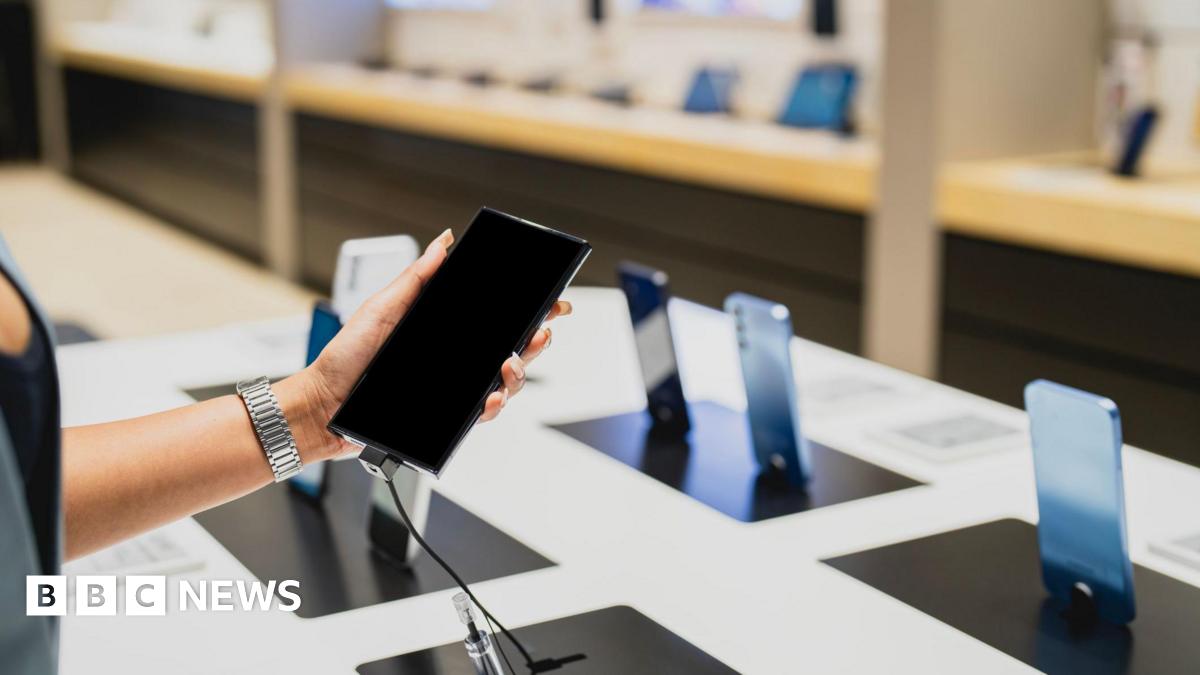
US President Donald Trump's administration has exempted smartphones and computers from reciprocal tariffs, including the 125% levies imposed on Chinese imports.
US Customs and Border Patrol published a notice late on Friday explaining the goods would be excluded from Trump's 10% global tariff on most countries and the much larger Chinese import tax.
The move comes after concerns from US tech companies that the price of gadgets could skyrocket, as many of them are made in China.
The exemptions also include other electronic devices and components, including semiconductors, solar cells and memory cards.
The US is a major market for iPhones, while Apple accounted for more than half of its smartphones sales last year, according to Counterpoint Research.
It says as much as 80% of Apple's iPhones intended for US sale are made in China, with the remaining 20% made in India.
Along with fellow smartphone giants such as Samsung, Apple has been trying to diversify its supply chains to avoid over-reliance on China in recent years.
India and Vietnam emerged as frontrunners for additional manufacturing hubs.
As tariffs took effect, Apple reportedly looked to speed up and increase its production of India-produced devices in recent days.
Trump had planned a host of steep tariffs on countries around the world set to go into effect this week.
But on Wednesday, he quickly reversed course, announcing that he would implement a 90-day pause for countries hit by higher US tariffs - except China - whose tariffs he raised to 145%. Trump said the Chinese tariff increase was because of the country's readiness to retaliate with its own 84% levy on US goods.
In a dramatic change of policy, Trump said all countries that had not retaliated against US tariffs would receive a reprieve – and only face a blanket US tariff of 10% – until July.
The White House said the move was a negotiating tactic to extract more favourable trade terms from other countries.
Trump has said his import taxes will address unfairness in the global trading system, as well as bring jobs and factories back to American shores.
Phones and computers are more than 15% of total US imports from China.he's exempted Smartphones and Tablets from new tariffs
Something that someone with foresight would have seen before taking any relevant action, rather than having to backtrack/water down.Phones and computers are more than 15% of total US imports from China.
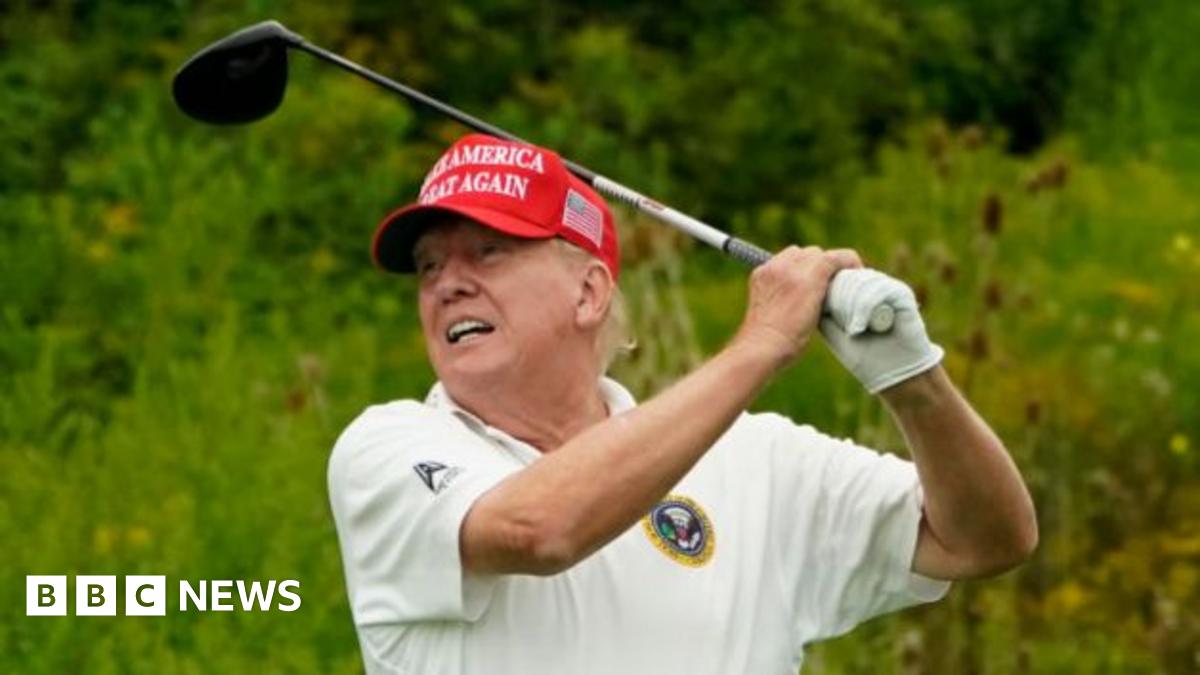
US President Donald Trump is in "excellent cognitive and physical health", says his White House physician.
In the first annual physical of his second presidential term at a Washington DC-area hospital, Trump was also found to have scarring "on the right ear from a gunshot wound", after an assassination attempt last July.
"President Trump remains in excellent health, exhibiting robust cardiac, pulmonary, neurological, and general physical function," his doctor, Captain Sean Barbabella, said in a memo.
At 78, Trump was the oldest president to take office in January, though his predecessor, Joe Biden, was older at 82 by the time he left.
As a part of Friday's nearly five-hour medical examination at the Walter Reed hospital in Bethesda, Maryland, Trump received several blood tests, a cardiac examination and ultrasounds, said his doctor, a US Navy emergency physician who served in Iraq and Afghanistan.
"His active lifestyle continues to contribute significantly to his well-being," Dr Barbabella wrote in the memo released by the White House on Sunday.
"President Trump exhibits excellent cognitive and physical health and is fully fit to execute the duties of the Commander-in-Chief and Head of State."
The president received neurological tests on his mental status, nerves, motor and sensory function and reflexes and showed no signs of depression or anxiety, according to the memo.
Trump was also given the Montreal Cognitive Assessment (MoCA), and scored 30 out of 30, said Dr Barbabella. The test is commonly used to detect cognitive decline and early signs of dementia and has tasks such as naming animals, drawing a clock and repeating words back five minutes later.
Speaking to reporters aboard Air Force One on Saturday, Trump said he "got every answer right" on the cognitive test.
"Overall, I felt I was in very good shape," Trump said. "A good heart, a good soul, a very good soul."
He added that doctors had given him "a little bit" of advice on lifestyle changes to improve his health, though he did not provide details.
Dr Barbabella also said Trump had "minor sun damage" and a few "benign skin lesions".
The president takes several medications to control his cholesterol - Rosuvastatin and Ezetimibe - as well as Aspirin for cardiac prevention and Mometasone cream for a skin condition, said the memo.
Trump's cardiac examination showed "no abnormalities", wrote Dr Barbabella.
The examination noted the president's medical history of "well-controlled hypercholesterolemia", a condition which can increase a patient's risk of a heart attack.
Other conditions noted in his medical history included a past Covid infection, rosacea, which is a skin condition often causing redness in the face, and a benign colon polyp.
The president weighs 224lb (101kg) and stands 6ft 2.5in tall, according to the records from Dr Barbabella. Trump has shed some pounds since February 2019, when he weighed 243lb.
Under the Body Mass Index calculator, he would currently be categorised within the overweight range, and not obese.
The memo noted that the president's "joints and muscles have a full range of motion", while crediting his good health to an active lifestyle, including "frequent victories in golf events".
It is the first medical report on Trump released to the public since a gunman tried to kill him at a campaign rally in Butler, Pennsylvania, last July, grazing his ear with a bullet.
At the time, Trump's former White House doctor, Ronny Jackson, released a report saying his injuries from the incident were superficial.
During Trump's first term in office, a White House doctor said he was in good health but needed to lose weight and exercise.
On the campaign trail, Trump frequently attacked his rival, Biden, over his cognitive and physical health.
After a poor debate performance last year against Trump, Biden declined to commit to taking a cognitive test, which he said he had not undergone while in office.
In another part of the BBC News forest, more details have emerged of this exemption:he's exempted Smartphones and Tablets from new tariffs:
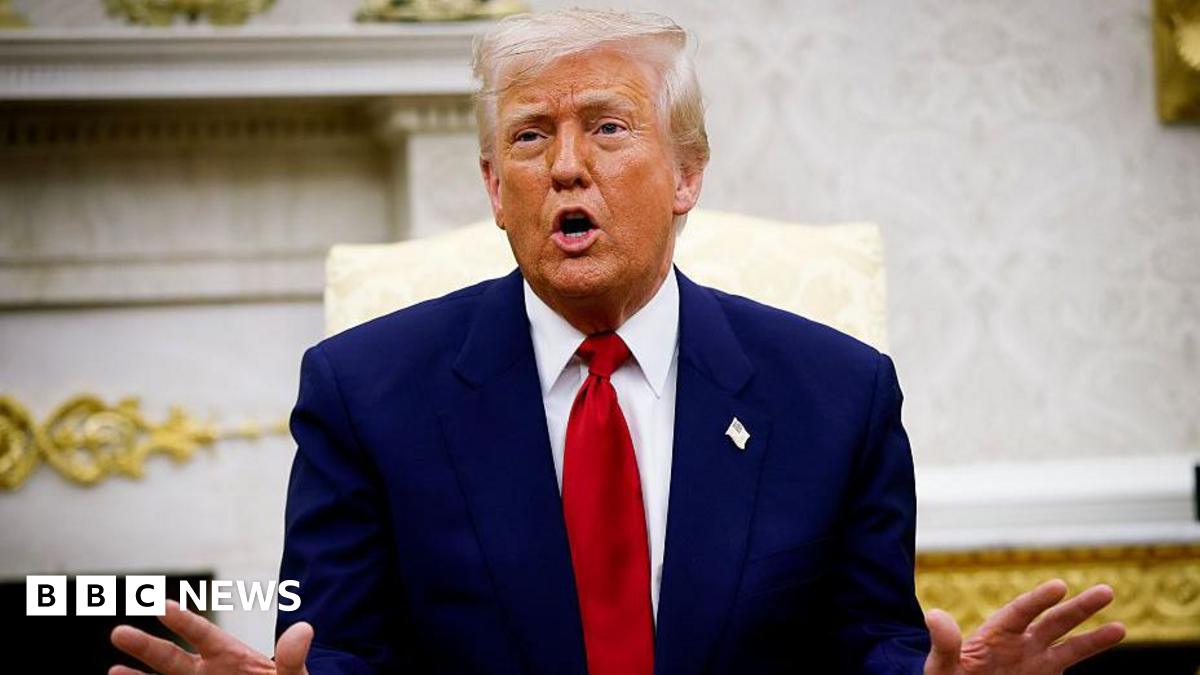
Well, well, well.
In a US customs messaging note quietly slipped out in the early hours of Saturday, a series of numbers were listed as exempt from the 125% tariff on goods entering the country from China.
The code "8517.13.00.00" means very little to most of the world, but in the US customs list it represents smartphones.
The inclusion meant the number one Chinese export to America by value last year was exempted from the import taxes, alongside other electronic devices and components, including semiconductors, solar cells and memory cards.
Just under a quarter of China's total exports are now exempt from the 125% tariff, according to Capital Economics.
The consultancy suggests there are other big winners from the exemptions, with 64% of exports to the US from Taiwan, 44% from Malaysia, and just under 30% from both Vietnam and Thailand now also exempt.
The 10% universal tariff is now riddled with exemptions, and the biggest carve outs are for many nations with massive trade surpluses from electronics manufacturing.
We're now at/near the point where the constant flip-flopping on tariffs is actually more damaging than if Trump just stuck to what he put forward on "Liberation day".
We're now at/near the point where the constant flip-flopping on tariffs is actually more damaging than if Trump just stuck to what he put forward on "Liberation day".
I'd say you're both right. Trump is trying to mitigate the effect on tech businesses and/or the consequences that are visible to voter, but by changing things every few days he's creating uncertainty which no business can plan for. So any benefit to American business is less likely to appear, and the damage to businesses (and thus ultimately to voters) will be that much worse.Only if those who vote for Trump are being informed of the details, or are paying enough attention to the finer details, it's entirely possible that there could be Americans who could be thinking:
"Trump brought in the tariffs, but look my technology hasn't gone up like the left warned, so he must be right, I'm going to keep supporting him"
